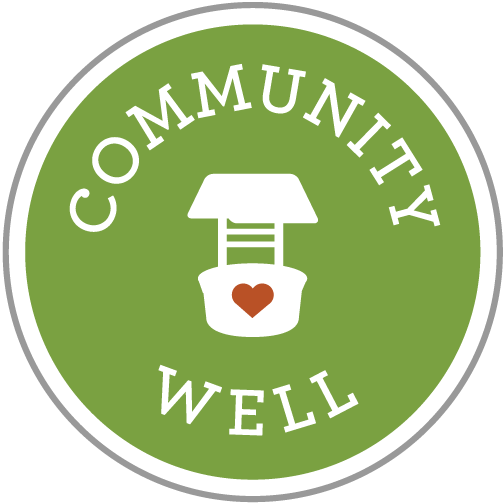A Hard Lesson for America
/By Troy Flint
Typically, the American public pays attention to public education twice a year, at graduation and back to school. If this were any normal year, our family would be preparing for one of those cherished memories – our eldest kid’s first day of kindergarten. But this year is far from normal and the only thing we’re preparing for is month six of Camp Quarantine.
We decided in early June that we would postpone, by a year, our daughter’s entrance into school. It was both a hard decision and an easy one. Hard, because we are delaying a rite of passage. Hard, because it’s difficult managing two kids while working from home, and hard because, like most children, my daughter would benefit from the socialization. On the other hand, it was an easy choice because we have more means than most and because after working in public education for 15 years, I know that most California schools lack the resources, the funding, the staffing, and the capacity to resume school safely.
So, when Gov. Gavin Newsom issued an order that effectively prevented most California schools from reopening for in-person instruction, he was only making plain what should have been obvious to everyone long before – California schools aren’t anywhere near ready to welcome students back to campus. School this year will mostly start in distance-learning mode, but that’s only superficially the result of Newsom’s directive. At its heart, it’s the result of 40 years of underinvestment in America’s social infrastructure – public schools, public health, childcare, youth services. The gutting of these critical services has undermined their effectiveness, destroyed trust in this nation’s institutions, and left them unequal to the challenges presented by this crisis.
Yet, knowing full well they have deprived schools of the resources to function properly even in normal times, some leaders are intent on sending students back to campus. This is just another sad indicator of the reckless disregard for our country’s youngest residents (on top of our abysmal policies related to family leave, childcare, early education, etc., etc., etc.). If the worth of a society is found in how it treats its most vulnerable – and I think that’s a reasonable standard – America is sorely lacking.
And make no mistake – educators are eager to go back to school. Some demagogues insinuate that teachers are resisting a return to school out of laziness; the truth is merely that teachers understand how incredibly misguided and dangerous this idea is. No one was more devastated by the shambolic end to the last school year – the lost learning time, the cancelled proms, the missed graduation ceremonies – than the teachers and classified staff who work with children every day. They desperately want to resume in-person instruction, but not at any cost and not if it imperils students, staff, and community.
While we know more about COVID-19 than we did in the spring, we are still largely in the dark about the effect of having mass, daily gatherings of students. While people point to other industrialized countries that have resumed school (and many of those have either cancelled or pulled back from on-campus instruction after some initial success) they overlook crucial differences. Our “peer” countries typically have better health infrastructure, particularly for the low-income households that make up the majority of public schools families, they have more uniform standards and practices for their public schools, and most importantly – they are light years ahead of the U.S. in controlling the virus!
No other industrialized nation has tried what many parts of the U.S. and some parts of California are attempting – sending kids back to school while the virus is raging. Using schools as laboratories and kids as guinea pigs during the greatest public health crisis in a generation, if not a century, is ill advised. What’s worse, our leaders are advocating this course of action without providing the resources that would give schools a fighting chance (and even that wouldn’t be enough to keep communities safe). Forget the often tardy, frequently confusing, and sometimes conflicting public health guidance from the state and federal governments. That’s bad enough but expecting California schools to implement the guidance with fidelity is insane given what they’re facing.
Despite having the 5th largest economy in the world, on a cost-adjusted basis, California ranks 38th nationally in per-pupil funding and has the highest youth poverty rates of any state in the entire nation! Our schools also rank 45th in the number of teachers per student, 44th in principals, 48th in overall staff per student, 46th in instructional aides, and 49th in guidance counselors, and 50th in librarians and nurses per student (nurses are pretty important in a pandemic).
Yet, many of our fellow citizens are advocating for sending children into a petri dish at a time when schools lack the resources and staff to follow recommended guidance. How can you social distance effectively under these conditions? If you reduce the number of students in each classroom, you need more facilities space. Not all schools have that. If you are operating more classrooms, you also need more teachers; we’re in the midst of a historic teacher shortage and it’s not like qualified people are lining up to teach during this mess. Transportation presents similar issues. If you limit the number of students on a bus to one or two per row, like other countries, you’ll need more busses or at least more bus routes, which requires more driver. On the sanitation front, you need PPE, sanitation stations, and additional custodians to execute regular deep cleanings. And where are the tests? In many cases, the results take a week to arrive in medical settings, let alone in schools. Very few school districts will be able to manage this process and although the state has provided some support, much of it is either slow-arriving or insufficient. And the response of the federal government is woefully inadequate, a case study in “too little, too late.”
In short schools are being set up for failure. Conquering (or just controlling) corona virus is not a public education issue, it’s a public health problem. Schools should not be the tip of the spear in our return to normalcy or the sacrificial lamb used to help revive the economy and pay the price of our political failures. And no matter how much public health theater we engage in, expecting children to comply with extremely restrictive protocols in a highly social environment like a public school is borderline delusional, but then magical thinking seems to be all the rage these days.
Yes, there’s some evidence that children, especially young children, are less prone to debilitating effects from COVID-19 and maybe even less likely to spread it. There’s also increasing evidence, including one of the largest studies to date and growing numbers of infections at summer camps and childcare centers, that suggest the danger is greater than first thought. However, you read that evidence, there is clearly risk even for children and that risk is greater for the parents, caregivers, staff who interact with the children every day.
Much has been written about the cruelty of asking teachers to risk their lives for an endeavor that has minimal chance of success and none of the support that would be required for a good result. A note is warranted for the other staff who care for students, the custodians, the bus drivers, the food service workers who are in close contact with both children and, potentially, the virus. The fact that classified employees in these jobs are usually overlooked says a lot about how our society values them – or doesn’t. In many school districts, the people in these positions are overwhelmingly Black or Latino and (and because of a combination of systemic racism and lack of access to quality medical care, possibly at greater risk of adverse effects from COVID-19) and mostly low-to-moderate income. Expecting them to serve on the front lines without adequate protection and support is obscene.

